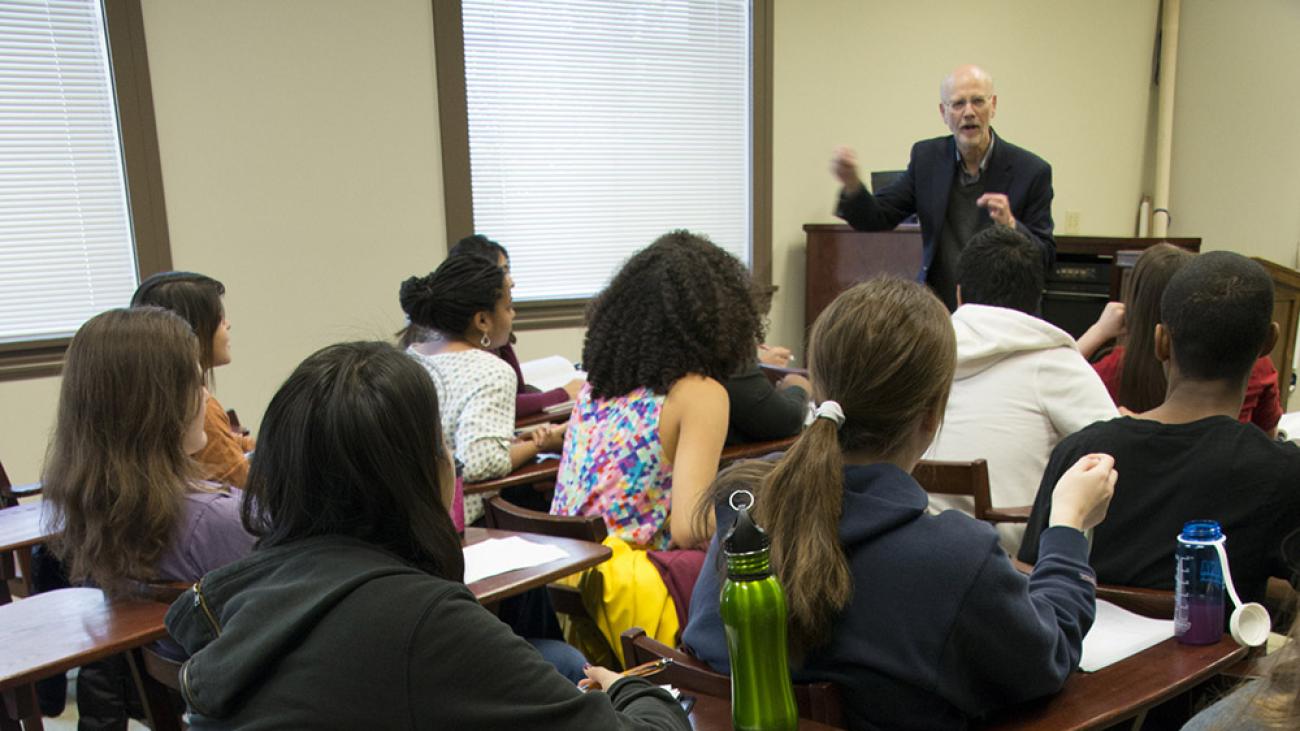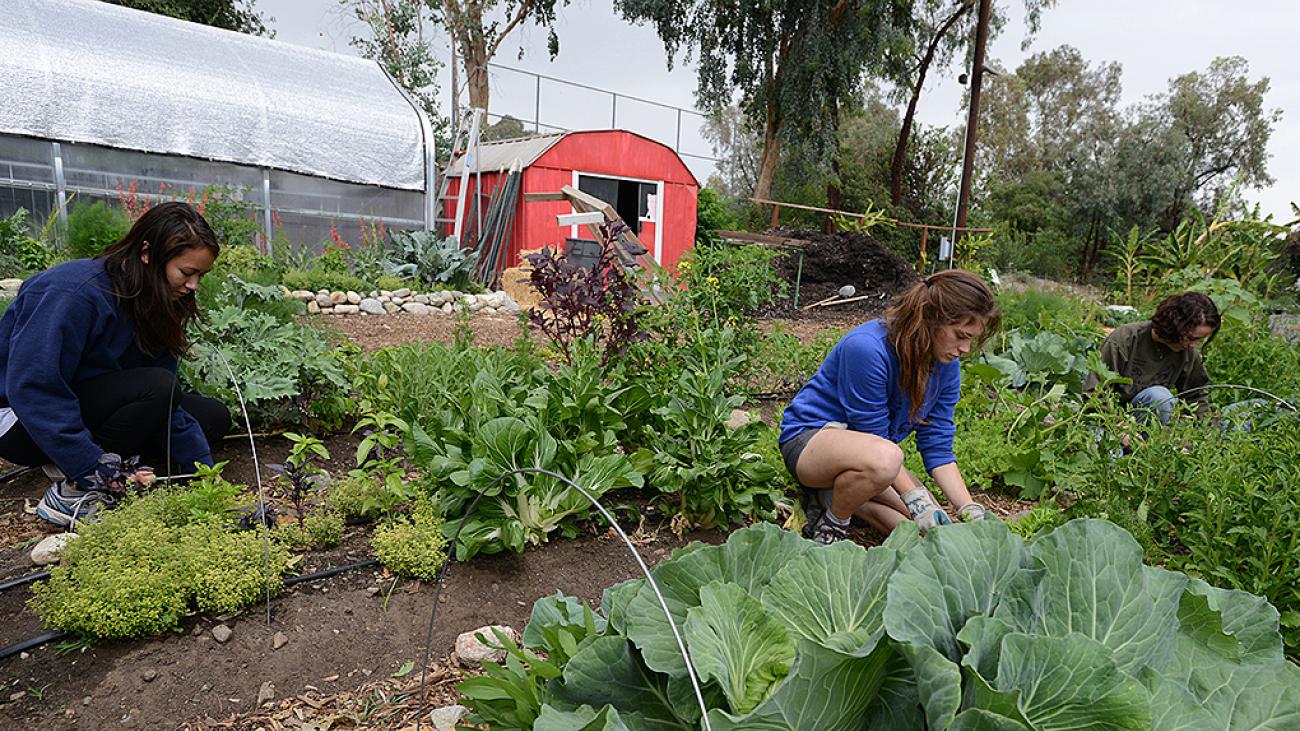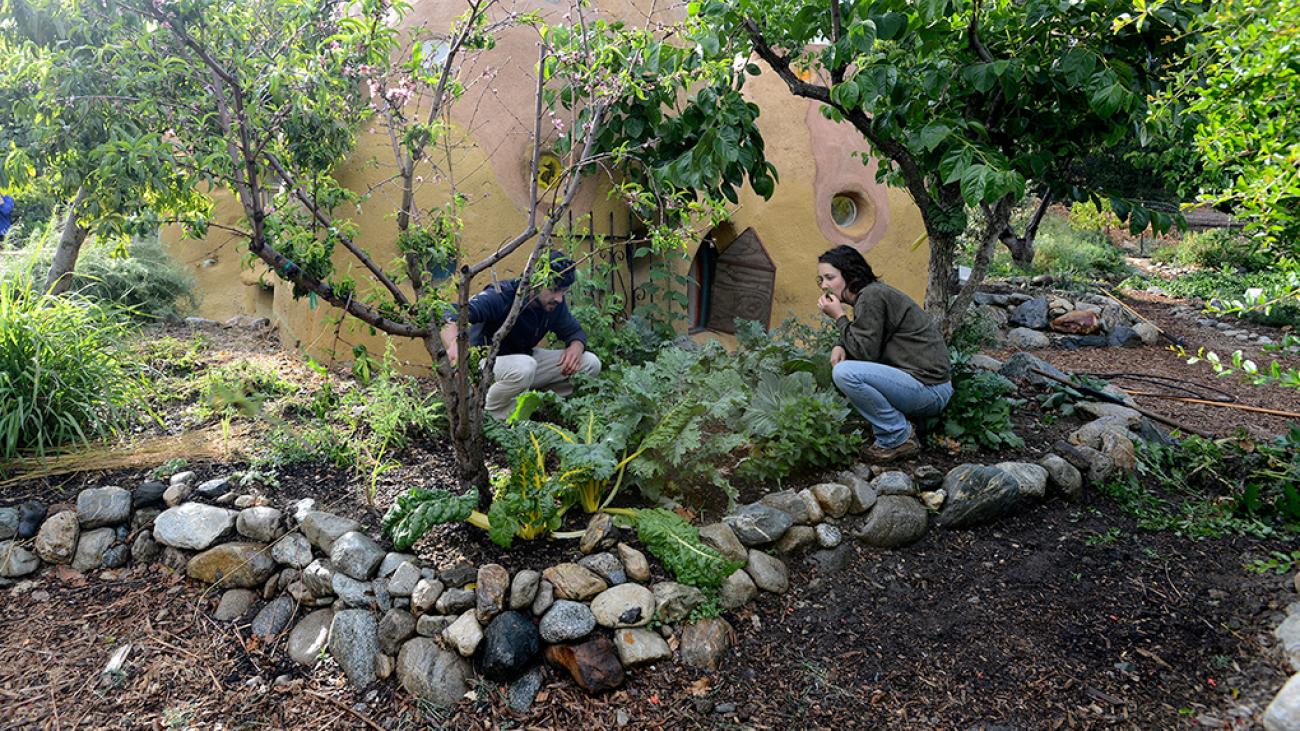
In class with Professor Char Miller

Students working at the Pomona College Organic Farm

Working near the Earth Dome at the Pomona College Organic Farm
Tackle One of the Defining Challenges of Our Time
In the 21st century, one of humanity’s most urgent tasks is building a sustainable society in the face of mounting pressure on our planet’s natural systems. As an Environmental Analysis (EA) major, you’ll be uniquely positioned to address today’s environmental challenges—and lead the way toward a more just, resilient, and sustainable future.
As part of the The Claremont Colleges, Pomona's EA program offers an interdisciplinary foundation that blends science, policy, ethics, and culture. You’ll begin with core courses that explore environmental history and policy, current ecological issues, and scientific principles—equipping you with the tools to understand the complexities of global environmental change.
From there, you’ll dive deeper into your interests by choosing between two distinct tracks: Environmental Science or Environment and Society. Each track offers guided course plans in areas such as:
- Sustainability and the Built Environment
- Environmental Economics
- Environmental Values and Ethics
- Race, Class, and Gender
- Natural Sciences (biology, chemistry, geology, math, and physics or engineering)
- Or you can chart your own course with a custom, faculty-approved plan
You won’t just study the environment—you’ll engage with it directly. EA students conduct hands-on research at local resources like Pomona’s Organic Farm and the Bernard Field Station, or work side-by-side with faculty on real-world projects. Many students also expand their global perspective by studying abroad in countries like Ecuador, New Zealand, or South Africa—where environmental issues intersect with local cultures and ecosystems.
As a senior, you’ll choose between a traditional senior thesis, where you’ll research a topic you're passionate about, or the EA Clinic, a team-based capstone project that addresses an environmental problem for an actual client.
The EA major prepares you for a broad range of impactful careers—in law, public policy, medicine, conservation, climate science, environmental justice, urban planning, and beyond. You’ll also be equipped to lead in areas like environmental education, grassroots activism, and sustainable food systems.
If you’re ready to turn your passion for the planet into meaningful action, Environmental Analysis at The Claremont Colleges will give you the knowledge, skills, and support to make it happen.